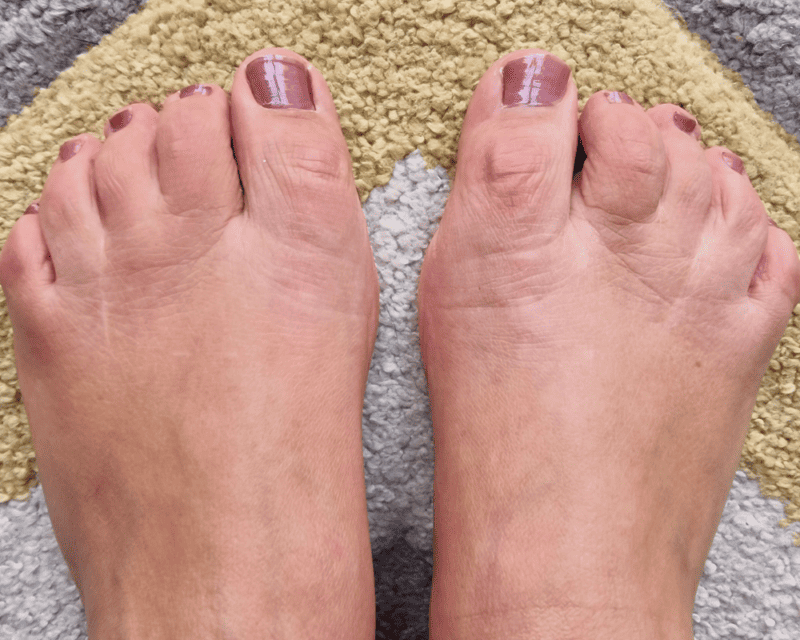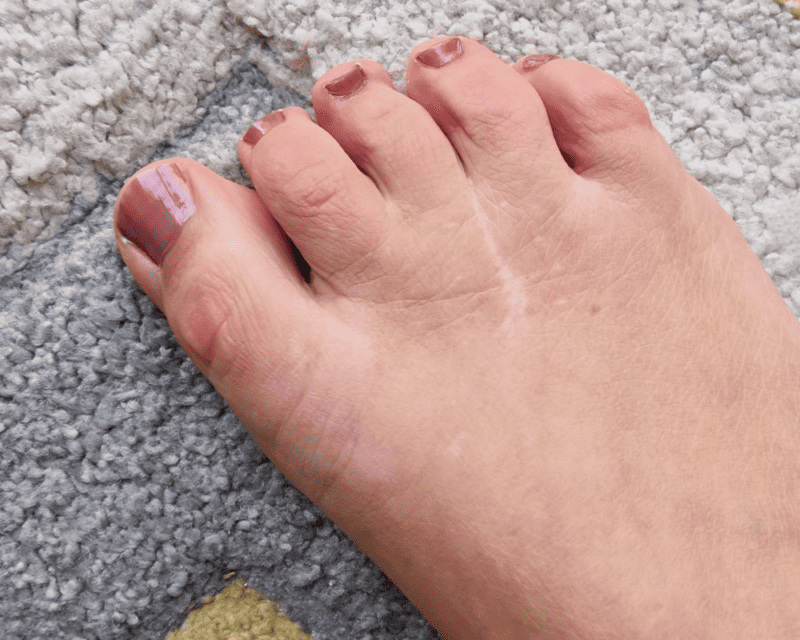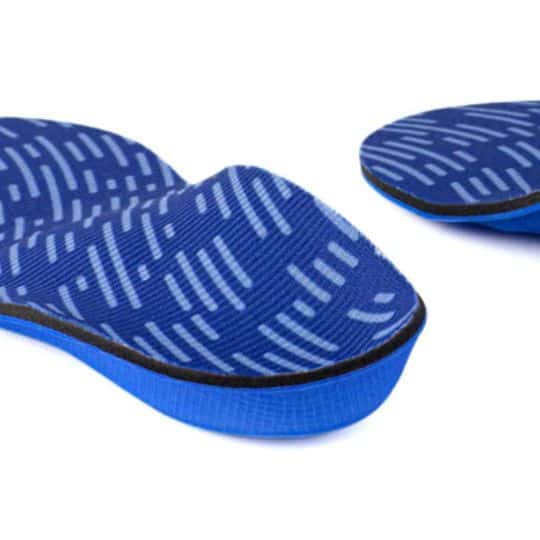When I was in my early twenties, I began getting an intense shooting pain between my third and fourth toes when walking, and the pain would shoot up my lower leg. It felt like someone had lit a match inside my foot, spreading like the fuse wire on a bomb. At the time, my job involved standing for long periods, and the intense pain made it unbearable. I couldn’t walk for long distances, cycle or dance – my favourite pastime at that age.
I went to the Doctors who referred me to the hospital for x-rays, where I discovered that I had Morton’s Neuroma, also known as Morton’s metatarsalgia, something I had never heard of before.
What is Morton’s Neuroma?

Morton’s Neuroma is a condition that causes pain and discomfort in the ball of the foot, often described as a burning or tingling sensation. It occurs when the tissue surrounding one of the nerves leading to the toes thickens and becomes inflamed. Although it is not life-threatening, Morton’s Neuroma can significantly impact a person’s quality of life, making walking or standing unbearable.
One interesting aspect of this condition is that it commonly affects women more than men. The most prevalent theory behind this gender disparity suggests that tight-fitting shoes such as high heels may be to blame. Women frequently wear narrow shoes with a pointed-toe box are at a higher risk due to the increased pressure on their forefoot. Additionally, certain activities like running or participating in high-impact sports can exacerbate symptoms.
I didn’t wear tight-fitting, pointed shoes – they were never my thing. But growing up, I was a long-distance runner, so this was likely the cause of my condition.
Another fascinating element worth discussing is misdiagnosis. Morton’s Neuroma shares symptoms with several other foot-related conditions, such as stress fractures, plantar fasciitis, and nerve entrapment syndromes. It can often take some time for patients to receive an accurate diagnosis, which delays proper treatment initiation and prolongs suffering unnecessarily. This highlights the importance of consulting with professionals specialising in foot health and being persistent in seeking clarification if initial diagnoses seem inconclusive or ineffective.
The Importance of Proper Footwear in Managing Morton’s Neuroma
Proper footwear is crucial when managing the discomfort and pain caused by Morton’s neuroma. This condition, characterised by thickening the tissue around the nerves leading to the toes, can be extremely debilitating. Many sufferers find relief using Morton’s neuroma insoles, specially designed to provide support and cushioning to the affected area.
One of the key aspects in managing Morton’s neuroma through footwear is finding shoes with a wide toe box. This allows your toes to spread naturally, reducing nerve pressure and alleviating pain. Additionally, shoes with adequate arch support help distribute weight evenly across your feet, preventing excessive pressure on specific areas. By selecting well-fitting shoes with these features, you can significantly minimise discomfort and improve overall mobility.
As much as it is advised to avoid fashion shoes and high-heels, there comes a time when we need them. You can make them better for you by using insoles for high heels with a narrow design and latex ball of foot cushioning. For those dealing with multiple foot issues, including Morton’s neuroma and plantar fasciitis, insoles for plantar fasciitis can provide additional arch support and relieve pain from both conditions simultaneously.
How Morton’s Neuroma Insoles Provide Relief and Support

One of the key benefits of Morton’s neuroma insoles is their ability to reduce pain and inflammation associated with this condition. The soft cushioning material provides gentle support for the arches, reducing pressure on the nerves between the metatarsal bones. By creating a more balanced weight distribution, these insoles can significantly alleviate discomfort and allow individuals to move without constant pain.
Furthermore, Morton’s neuroma insoles offer added stability and shock absorption. This feature provides immediate relief and helps prevent further damage to the foot. By minimising impact when walking or running, these insoles protect vulnerable areas like the ball of your foot and allow you to continue your daily activities comfortably.
Whether you’re an athlete dealing with recurring foot pain or spending long hours on your feet at work, Morton’s neuroma insoles offer an effective solution for providing much-needed relief and support. With their unique design and advanced cushioning materials, these insoles can improve your comfort while helping you effectively manage this often debilitating condition.
Other Treatment Options to Consider in Conjunction with Insoles

At the time of my diagnosis, I had few options available, so I had surgery on both feet (at the same time) to remove the inflamed nerves. The procedure was completed in one day, and I was allowed home the following morning, but recuperation lasted six weeks. During that time, I had to keep my feet elevated as much as possible – luckily, it was during the summer, so I resigned myself to the sunlounger with a collection of books.
These days, many other treatment options can provide further relief in addition to the insoles and help manage the condition. One such option is physical therapy. A skilled physical therapist can guide you through exercises that stretch and strengthen the surrounding muscles, helping to alleviate pressure on the affected nerve. They may also use ultrasound or laser therapy to reduce inflammation and promote healing.
Another treatment option is corticosteroid injections. These injections are administered directly into the painful area, temporarily relieving inflammation and swelling. While they can effectively relieve symptoms, it’s important to note that corticosteroid injections are not a long-term solution and should only be used sparingly due to potential side effects.
A lesser-known treatment option worth exploring is acupuncture. This ancient Chinese practice involves inserting thin needles into specific points along energy channels in the body. Although its mechanisms aren’t fully understood, some studies have shown acupuncture to be beneficial in managing Morton’s neuroma pain. By stimulating these points, acupuncture may help reduce pain signals and promote natural healing processes within the body.
Combining various treatment options alongside insoles can improve overall outcomes when dealing with Morton’s neuroma discomfort. Physical therapy helps improve strength and flexibility while reducing pressure on the nerve; corticosteroid injections offer temporary relief from inflammation; and acupuncture offers an alternative approach rooted in traditional medicine principles.

